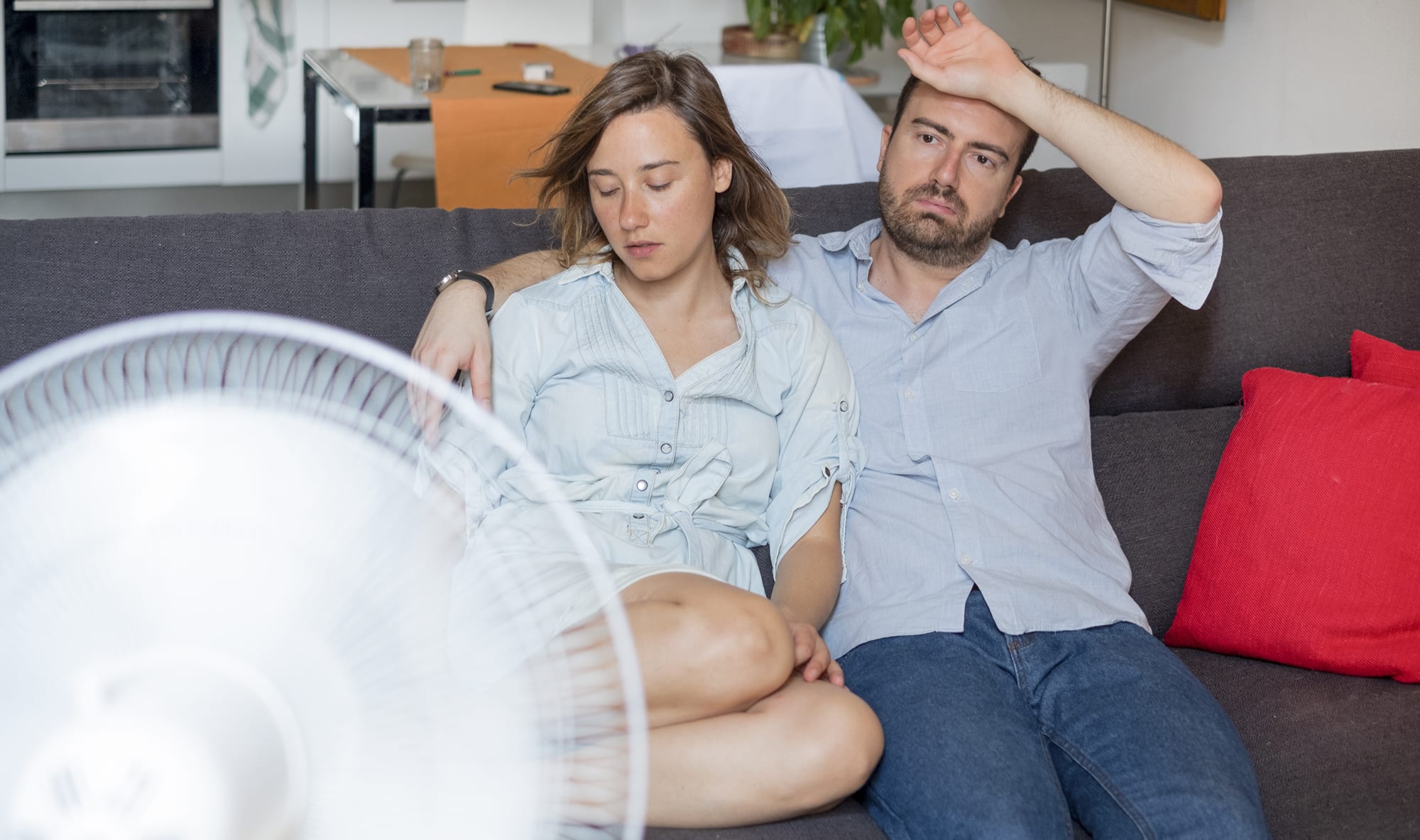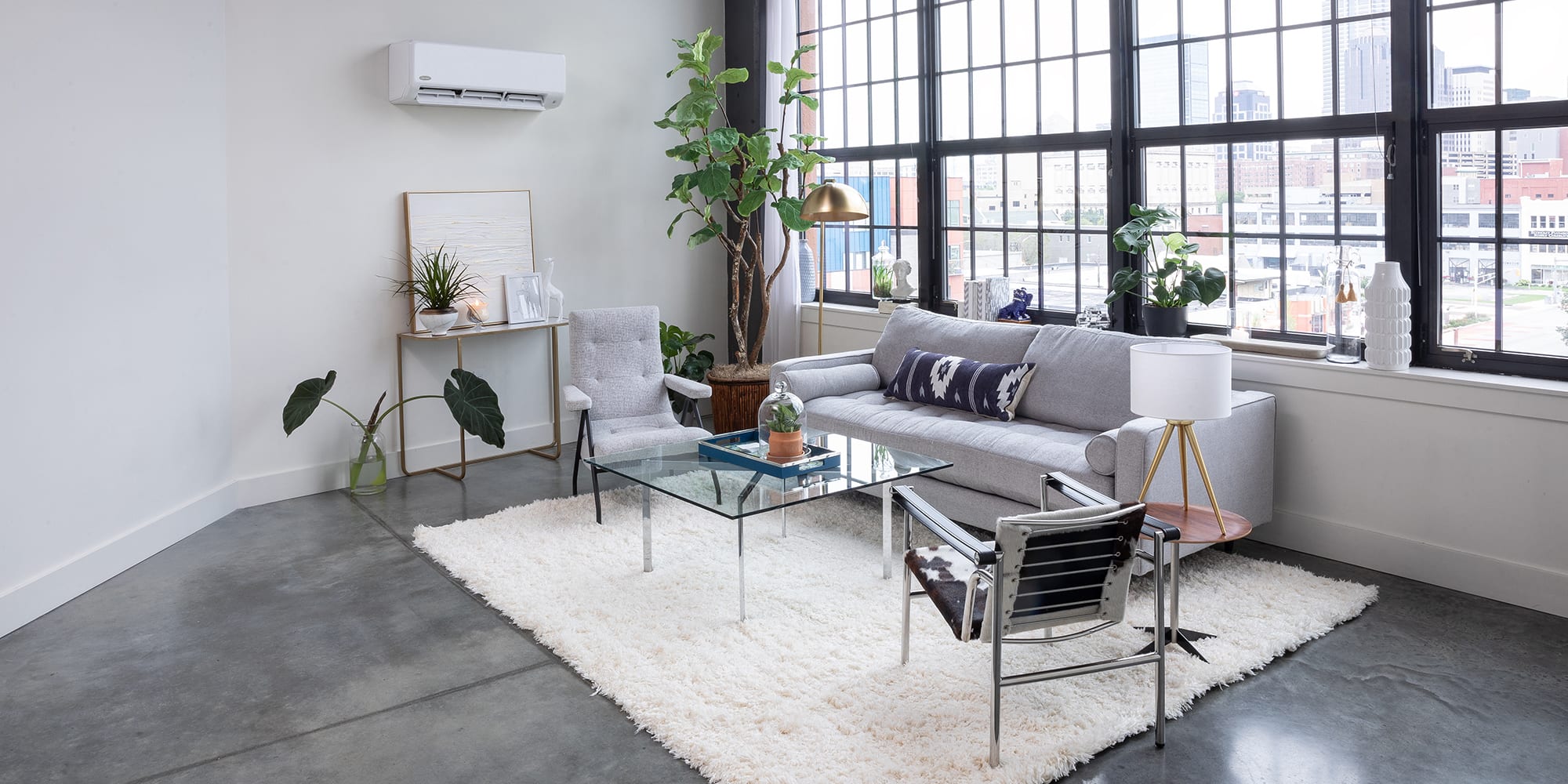Ductless Mini Split Repair
By Ryan Mayes
When it comes to residential heating and air conditioning, a ductless mini split AC is a great fit for room additions, space conversions and a home without ductwork. They are a great way to improve energy efficiency and offer flexible heating and cooling, making you comfortable year-round. While these systems are reliable, ductless mini split repair and maintenance is an inevitable aspect of their operation. To make this process less intimidating, we have compiled a comprehensive mini split troubleshooting guide.
Much like a typical central air conditioning system, mini split maintenance can be a mixed bag – some tasks are user-friendly, and others are best reserved for your local Carrier expert. When the system begins showing warning signs, our mini split troubleshooting guide can help determine if you need to call an expert for servicing mini splits at your house.

Mini Split Troubleshooting Guide
As you consider your options for mini split troubleshooting and servicing mini splits, you definitely have options. Of course, your best bet is to contact your local Carrier expert any time you are in doubt about the solution. However, if you want to troubleshoot on your own first, start the process by making some basic observations of your indoor and outdoor units.
For example, the indoor unit of HVAC systems includes an air filter that needs to be cleaned on a regular basis. Heavy dust and dirt buildup on the filter can affect system performance in a number of ways. For these reasons, opening the indoor unit and checking the filter is a good first step.
The indoor unit also includes an air handler that pushes heated or cooled air out into your living area. The indoor unit’s blower wheel can be affected with dust and dirt buildup, causing reduced airflow, higher energy use and reduced comfort. While you may not have the tools or the training to properly clean the blower, at least you’ll be able to communicate your observation to someone who can do the job.

Why Is My Mini Split Not Blowing Cold Air?
A mini split not blowing cold air during the warmer, summer months deserves a closer look. Issues related to complaints about mini splits not cooling include:
- System not running at all: If the system isn’t running at all, you might have an electrical issue. Start by making sure the system is turned on. Then, check the breaker box to make sure your home's power supply is providing power to the system. The outdoor unit should also have a separate power shutoff switch you can check. Finally, make a visual inspection of electrical connections to rule out any obvious signs of damage.
- Weak airflow: If your system is running but airflow seems weak, check the indoor unit’s air filter and, if possible, the indoor coil and blower wheel. Heavy buildup of dirt and dust could be the culprit.
- Reduced cooling: Ductless air conditioners require refrigerant in the system and unrestricted airflow across the condenser and evaporator coils to provide cooling. If the system is blowing, but the air doesn’t seem cold enough, a refrigerant leak could be the culprit. One visual sign of low refrigerant or refrigerant leakage is frost/ice buildup on the outdoor AC unit. Dirt and debris buildup on outdoor units or other obstructions that restrict airflow can also lead to reduced cooling performance.
If you are not familiar with mini split AC operation, it might be a good idea to visit our guide on what a ductless air conditioner is and how it works. Cleaning the air filter, coils and other components can help resolve your issues with your mini split not blowing cool air, but if you suspect a refrigerant leak or your system won't turn on at all, it’s probably time to contact a licensed HVAC technician .

Why Is My Mini Split Leaking Water?
A mini split leaking water can be caused by a number of issues. A severely dirty filter can cause the coil to freeze and that can lead to water leakage when it thaws.
A blocked drain line or a damaged drain pan can also lead to a mini split leaking water . As a part of normal air conditioner operation, your system pulls heat and humidity from indoor air. That humidity turns into water (condensate) which accumulates in a drain pan and exits through a drain line. If the drain pan becomes rusty, corroded or otherwise is damaged, you can find your mini split dripping water. And, if the drain line becomes clogged, condensate can leak out. If your AC is leaking water and the filter is clean, check the drain pan and drain line for issues.
What Are The Symptoms Of Low Refrigerant In A Mini Split?
Low refrigerant in a mini split can cause several symptoms. Some common signs of low refrigerant levels include:
- Reduced Cooling/Heating Capacity: When refrigerant levels are low, the mini split system may not be able to provide enough cooling or heating for your space. This is because the refrigerant is responsible for transferring heat between the indoor and outdoor units.
- Longer Running Time: The mini split system may run for longer periods of time than usual as it tries to reach the set temperature but may never quite reach it.
- Ice Buildup: Low refrigerant levels can cause ice buildup on the evaporator coil, reducing airflow and reducing the system's ability to cool or heat.
- Hissing Sound: A hissing or bubbling sound may come from the indoor unit, which is caused by the refrigerant leaking from the system.
If you suspect that your mini split system has low refrigerant levels, it's important to contact a local Carrier expert to properly diagnose and repair the issue.
Why Is My Mini Split Not Working In Heat Mode?
There are several reasons why a ductless mini split is not heating. Here are a few common causes:
- Thermostat Settings: Make sure the thermostat is set to heat mode and the temperature is set to a higher setting than the current room temperature.
- Air Filter: A dirty or clogged air filter can restrict airflow and cause the system to shut down in heat mode. Check and replace the air filter if necessary.
- Blocked Outdoor Unit: The outdoor unit of a mini split system can become blocked by leaves, snow, or other debris, preventing proper heat exchange. Clear any obstructions from around the unit.
- Refrigerant Leak: A refrigerant leak can cause the system to shut down in heat mode. Low refrigerant levels can prevent the system from properly absorbing heat from the outdoor air.
- Faulty Parts: Faulty parts, such as a faulty compressor or reversing valve, can prevent the mini split system from operating in heat mode.
If you have tried the above steps and your mini split system is still not working in heat mode, it's best to contact a local Carrier expert to diagnose and repair the issue.
WHY DOES MY MINI SPLIT KEEP SHUTTING OFF?
There could be several reasons why your mini split keeps shutting off. First off, a dirty air filter could impede proper airflow, triggering automatic shutdowns. Additionally, low levels of refrigerant in the system, a malfunctioning thermostat, or issues with the compressor could be contributing to the interruptions in operation. Addressing these potential causes systematically will help identify and rectify the underlying issue, ensuring the optimal functionality of your mini-split system.
Other Mini Split Issues
Other issues that may indicate mini split servicing is needed include a moldy/mildewy smell or vinegar smell. Each of these can be associated with a different issue, ranging from a clogged condensate line, to a refrigerant leak. If your system cycles on and off more frequently than usual or starts making new/different sounds, it may be time to contact a professional as well.
When Do I Need a Professional For Mini Split AC Repairs?
When mini split air conditioners begin to show any of the aforementioned issues and mini split troubleshooting does not reveal an obvious solution, it’s probably time to contact a professional for an estimate on mini split repairs. Both as a preventative measure and to deal with normal wear and tear, it’s a good idea to have your system serviced annually (at a minimum – twice annually is better) to keep it operating at its best and to establish a working relationship with a local HVAC professional. Because mini split cleaning cost is typically less than replacing a component, this is a cost-effective habit. Learning how long do mini splits last can also help you set realistic expectations for when you should keep getting repairs as opposed to replacing your ductless heating and cooling system.
Schedule a Mini Split Repair Service
Ductless mini split repair is best performed by an experienced HVAC technician. If you don’t already have a trusted contact for mini split customer service, you can find a Carrier expert using our dealer locator. Calling your local Carrier dealer to schedule a mini split repair service at the first sign of trouble can potentially prevent a more expensive issue or full system replacement later.
Mini Split Cleaning Cost
Most homeowners don’t budget for mini split cleaning cost, but it’s generally a good idea. While pricing will differ depending upon your contractor and the type of service they recommend, the cost for mini split heating and cooling system maintenance can be between $125 - $400. For your long-term comfort and the health of your system, it’s probably money well spent.
FAQs About Ductless Mini Split Repair
- Learn about ductless air conditioner cost
- How big of a mini split do I need?
- Learn how to install a mini split system
- Read about mini split placement
- Discover ductless air conditioner for garage and other applications
- Learn about the different types of ductless heating and cooling system types

